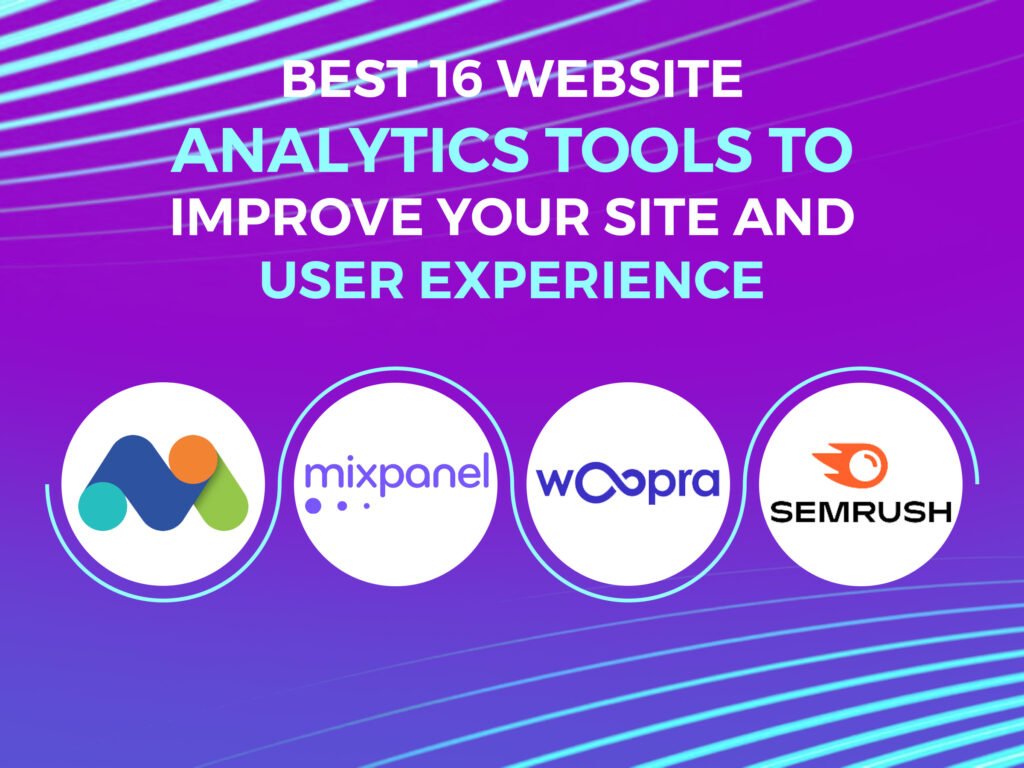Ever wondered why some websites seem to know exactly what visitors want? It’s not magic. It’s the power of website analytics tools! These tools help you peek into how people use your site, what they love, and where they get stuck. Whether you run a blog, an online store, or a service business, understanding your audience is the key to making your site better.
In this guide, I’ll discuss 16 of the best website analytics tools for 2025. They’re packed with features to improve your site’s performance and keep your visitors happy. Let’s get started!
What Are Web Analytics Tools?
Think of web analytics tools as your site’s detectives. They track things like how many people visit, which pages they check out, and how long they stick around. Some even show you where visitors click or why they leave. I remember setting up my first tool years ago. It was eye-opening to see how many folks bounced off my homepage because it loaded too slowly! These tools give you real data to fix issues, boost user experience, and grow your traffic. From free options to premium ones, there’s something for everyone.
Here is a list of website analytics tools.
Google Analytics
Let’s start with the big one. Google Analytics. It’s free, easy to set up, and used by millions. You can see where your traffic comes from (like social media or search engines), which pages get the most views, and even track sales if you’re selling stuff. The latest version, Google Analytics 4, adds cool AI predictions to guess what your visitors might do next. It’s perfect for beginners and pros alike, though it can feel overwhelming at first with all the data. Pair it with Google Search Console for extra SEO benefits!
Matomo (Formerly Piwik)
Matomo is the best option if you care about privacy. Unlike some tools that share data with third parties, Matomo lets you host it on your own server, keeping everything in-house. It tracks visitors, page views, and conversions just like Google Analytics, but with a focus on user control. It’s open-source, so it’s free to start, though paid plans unlock more features. Great for businesses that want detailed insights without compromising ethics.
Check out this blog post: 15 Cheap Website Builders in 2025
Contentsquare
Contentsquare is all about understanding user behavior. It uses heatmaps and session recordings to show you exactly how people interact with your site. Are they clicking that big red button or ignoring it? This tool helped me once figure out why a checkout page wasn’t working, turns out, the “buy now” button was too small on mobile! It’s pricier (custom pricing), but ideal for e-commerce or sites obsessed with perfecting user experience.
Mixpanel
Mixpanel digs deep into what your users do, not just how many show up. It’s awesome for tracking specific actions, like how many people sign up for your newsletter or add items to a cart. It’s real-time, too, so you can see what’s happening right now. Pricing starts free for small sites but scales up (around $25/month) for more data. If you’re focused on engagement over raw traffic, this one’s a winner.
Woopra
Woopra maps out your visitors’ entire journey, from their first click to their last. It’s like a storybook of how people move through your site. I love how it connects the dots across devices. Someone might browse on their phone, and then buy on their laptop. It starts free, with premium plans from $49/month. Perfect for seeing the big picture of user experience.
Read this blog post: Benefits of Responsive Web Design
Optimizely
Optimizely is a champ at testing. It lets you run A/B tests to see what works best, like testing two headlines to find the click magnet. It also tracks how changes affect user behavior. Pricing varies (contact them for details), but it’s a go-to for anyone who loves tweaking their site to perfection. I’ve used tools like this to double my click-through rates. Small changes can make a huge difference.
HubSpot Website Grader
HubSpot’s Website Grader is a free, simple tool that scores your site on speed, SEO, and mobile-friendliness. It’s not as deep as others, but it’s a quick way to spot weak spots. I ran my site through it once and realized my images were slowing everything down, fixed it in a day! Pair it with HubSpot’s other tools for more analytics power.
Semrush
Semrush is an SEO superstar. It analyzes your site’s traffic, keywords, and even spies on competitors. Want to know why your rival ranks higher? Semrush will show you. Plans start at $129/month, but the insights are worth it if you’re serious about search rankings. It’s helped me find low-hanging keyword fruit more times than I can count.
Ahrefs
Ahrefs is another SEO heavy-hitter. It’s amazing for checking backlinks, tracking keyword rankings, and auditing your site for issues. It also gives traffic estimates. It’s a must for anyone chasing Google’s top spots. I’ve used it to uncover broken links that were hurting my site, fixed them, and saw a traffic bump in weeks.
SimilarWeb
SimilarWeb gives you a bird’s-eye view of your site and competitors. It tracks traffic sources, audience demographics, and even engagement stats. The free version is solid, but pro plans dig deeper. It’s great for benchmarking. Once I saw a competitor getting tons of social traffic and adjusted my strategy to match.
Chartbeat
Chartbeat is built for publishers. It shows real-time data on how readers engage with your content, like how far they scroll or how long they stay. Plans start at $7/month, making it affordable for bloggers or news sites. If you live and breathe content, this tool’s a game-changer.
Tableau
Tableau turns your data into stunning visuals. It’s not just for websites, it pulls info from multiple sources and creates dashboards you can actually understand. It’s best for data nerds who want to combine analytics with other business stats. I’ve seen it make complex reports feel like a breeze.
G2
G2 isn’t a traditional analytics tool. It’s a review platform that tracks how people rate your site or business. You can use it to see user feedback and compare tools. The free version works, with paid plans for deeper insights (custom pricing). It’s a sneaky way to gauge real-world performance.
Hotjar
Hotjar is a fan favorite for heatmaps and recordings. It shows where people click, scroll, and drop off. I once used it to spot a confusing menu, visitors were clicking everywhere but the right spot! The free plan covers basics, with paid options from $39/month. It’s a must for fixing user experience hiccups.
Adobe Analytics
Adobe Analytics is the enterprise pick. It’s packed with advanced features like predictive analytics and cross-channel tracking. It’s not cheap (custom pricing), but if you’re a big business needing serious data muscle, it’s unbeatable. Think of it as the luxury car of analytics tools.
Kissmetrics
Kissmetrics focuses on individual users. It tracks what each person does, helping you personalize their experience. It’s great for e-commerce or subscription sites. Pricing starts around $299/month—pricey, but powerful for boosting conversions. I’ve seen it turn casual visitors into loyal customers.
How to Choose the Right Website Analysis Tool?
Picking the right tool depends on your goals. Want free and basic? Go with Google Analytics or HubSpot’s Grader. Need SEO insights? Semrush or Ahrefs. Obsessed with user behavior? Hotjar or Contentsquare. Think about your budget, too—free tools work for small sites, but paid ones unlock more power. Test a few to see what feels right. I’ve mixed and matched over time to cover all bases.
Webronix Solutions Is Your Digital Partner in Success
Webronix Solutions offers expert support to grow your online presence. We provide an extensive range of digital services in the USA. From website development to Google paid marketing, logo design, social media marketing, and more, we’ve got your back. Think of them as the co-pilot of your business success journey.
Conclusion
Website analytics tools are your secret weapon for a better site. Whether you’re tracking traffic with Google Analytics, spying on competitors with Semrush, or perfecting user experience with Hotjar, there’s a tool for you. Start with one, experiment, and watch your site and your visitors thrive in 2025. Which one will you try first?


